Mario is Missing! (PC): Difference between revisions
Bowserbros (talk | contribs) |
Bowserbros (talk | contribs) |
||
| Line 151: | Line 151: | ||
*The largest city in {{wp|New Zealand}}, {{wp|Auckland}}, is spelled "Auchland". | *The largest city in {{wp|New Zealand}}, {{wp|Auckland}}, is spelled "Auchland". | ||
*The {{wp|Little America (exploration base)|Little America}} exploration base in {{wp|Antarctica}} is listed as a city. | *The {{wp|Little America (exploration base)|Little America}} exploration base in {{wp|Antarctica}} is listed as a city. | ||
*{{wp|Sarajevo}} is listed as a part of the {{wp|Serbia and Montenegro|Federal Republic of Yugoslavia}} despite {{wp|Bosnia and | *{{wp|Sarajevo}} is listed as a part of the {{wp|Serbia and Montenegro|Federal Republic of Yugoslavia}} despite {{wp|Bosnia and Herzegovina}} obtaining independence in 1992. | ||
<!--;[[Amsterdam]]--> | <!--;[[Amsterdam]]--> | ||
Revision as of 15:17, July 17, 2024
| Mario is Missing! | |||
|---|---|---|---|
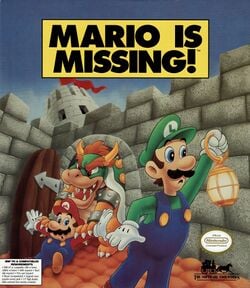 For alternate box art, see the game's gallery. | |||
| Developer | The Software Toolworks | ||
| Publisher | The Software Toolworks | ||
| Platform(s) | MS-DOS, Mac | ||
| Release date | MS-DOS: Template:ReleaseMac: Template:Release[?] | ||
| Language(s) | English (United States) | ||
| Genre | Educational | ||
| Rating(s) |
| ||
| Mode(s) | Single-player | ||
| Format | Home computer system:
| ||
| Input | Home computer system:
| ||
Mario is Missing! is an educational game created for MS-DOS and Mac. It is the first game of the Mario Discovery series. Mario is Missing! was released in floppy disk format for MS-DOS in 1993, with the CD-ROM Deluxe edition and conversions released the following year. Its gameplay was widely panned by critics. A follow-up called Mario's Time Machine was later released. This is the second game in the Super Mario franchise in which Luigi is the sole main protagonist, the first being Luigi's Hammer Toss. This game is mostly based on Super Mario World, which was a common theme of the Mario Discovery series and Super Mario educational games.
Story
In his latest scheme, Bowser decides to flood the Earth with hairdryers from Hafta Havit Hairdryer Hotline Corp to melt Antarctica. In order to buy the hairdryers, Bowser has his Koopas travel all over the world and steal various important landmarks he plans to sell. Mario, Luigi, and Yoshi follow Bowser to Antarctica to stop him. However, Mario proceeds on his own and is captured by Bowser. The reason for Mario proceeding alone varies between the game's versions. Luigi is too frightened to enter the castle, forcing Mario to enter alone. Despite his brother's warnings against taking candy from strangers, Mario accepts and eats candy offered to him by Bowser, who is disguised as a butler, allowing Mario to be captured in a net.
With Mario captured, Luigi finds himself faced with the task of returning all the stolen artifacts and saving both his brother and Earth. He bravely enters the castle, leaving Yoshi outside.
Ending
In the DOS version, Luigi takes Bowser's shell (which covers his tail in this depiction) off, causing Bowser to slink off-screen, embarrassed about his polka-dot boxers. This is the only time Bowser has been seen without his shell. Luigi shakes the shell to retrieve the key to Mario's cell, then throws the carapace away. Bowser returns wondering where his shell is, with Luigi then lying to him saying he threw the shell off the balcony; then, when Bowser leans over the railing to look for it, Luigi kicks him off and he lands in the snow. Luigi then opens Mario's cell and the two dance around in joy. They then go outside and shake Yoshi's hand before walking off into the distance together. Bowser then pokes his head out of the snow, looking in their direction with his shell back on.
In the Macintosh version, Bowser does not run off after his boxers are revealed, and Luigi smacks him off the balcony with his own shell.
Characters
Playable
Supporting
- Mario
- Yoshi
- Princess Toadstool (CD-ROM Deluxe only)
- Toad (CD-ROM Deluxe only)
- Donkey Kong (CD-ROM Deluxe only)
- Monty Mole (CD-ROM Deluxe only)
- Dino-Rhino (CD-ROM Deluxe only)
Antagonists
Gameplay
In each level, Luigi must retrieve several artifacts which were stolen by several Koopas within the city and return them to their rightful places. Luigi must jump on the Koopas to defeat them and reclaim the artifacts, which he then takes back to the landmarks they were stolen from. He must answer trivia questions about the landmarks before the Curators will take the wares back.
The DOS version adds a videophone aspect to gameplay, and Luigi must call the help number provided at the landmarks to get in touch with his friends, answer the questions, return the artifact, and receive a monetary reward. The mayor of the city also phones Luigi when he arrives, asking for his help in stopping the Koopas; he later phones when Luigi secures the city, thanking him and wishing him luck in finding Mario. Mario himself even manages to phone Luigi, giving him advice on his journey as well as updates on his capture and the Koopas' struggle to maintain their plot as planned. This version also has a Taxi feature, in which Luigi collects little Taxi tokens around the city and then exchanges them for rides across town to any point on the map.
As well as returning the artifacts, Luigi must also deduce what city he is in so that he can use the Globulator and call Yoshi to his aid for double the walking and running speed. Without Yoshi, Luigi cannot finish the level, as the exit pipe is occupied by a Pokey. Yoshi proceeds to gobble the Pokey up.
Once Luigi has secured all the cities whose doors are located on a floor of the castle, Luigi must use a fire flower collected in the cities to defeat them using their only weakness - fire.
In addition, there was a later enhanced edition known as the CD-ROM Deluxe version. It included full-on voice acting to go along with the dialogue, although not all of the in-game text matched the audio exactly. The voice actors are known (Kathy Fitzgerald, Rob Wallace, Bob Sorenson, Nicholas Glaeser, David Gill), but the game does not specify which of them supplied which voices. There are also some graphical changes, such as loading screens when the screen is black, and icons of Princess Toadstool, Toad and Donkey Kong replace a recurring phone call NPC (although the old dialogue was not changed on-screen). The viewings of every historic spot in particular were originally recreated and shown in garish coloring. The CD-ROM Deluxe version replaces most of these pictures with realistic photographs and even live-action video clips to represent the landmarks, with some exceptions carried over from the floppy disk version.
Cities
- First Floor
- Rome, Italy (Europe) 1st door
- Nairobi, Kenya (Africa) 2nd door
- Beijing, China (Asia) 3rd door
- Moscow, Russia (Europe) 4th door
- San Francisco, United States (North America) 5th door
- Second Floor
- Athens, Greece (Europe) 1st door
- Madrid, Spain (Europe) 2nd door
- Marrakech, Morocco (Africa) 3rd door
- Mexico City, Mexico (North America) 4th door
- Paris, France (Europe) 5th door
- Third Floor
- Berlin, Germany (Europe) 1st door
- Buenos Aires, Argentina (South America) 2nd door
- Dublin, Ireland (Europe) 3rd door
- Kathmandu, Nepal (Asia) 4th door
- Sydney, Australia (Oceania) 5th door
- Fourth Floor
- Amsterdam, Netherlands (Europe) 1st door
- Bombay, India (Asia) 2nd door
- Cairo, Egypt (Africa) 3rd door
- Tokyo, Japan (Asia) 4th door
- Toronto, Canada (North America) 5th door
- Fifth Floor
- Istanbul, Turkey (The Middle East) 1st door
- Jerusalem, Israel (The Middle East) 2nd door
- London, United Kingdom (Europe) 3rd door
- New York City, United States (North America) 4th door
- Rio de Janeiro, Brazil (South America) 5th door
Mistakes and errors
This section is under construction. Therefore, please excuse its informal appearance while it is being worked on. We hope to have it completed as soon as possible.
Although Mario is Missing! is intended to teach its players geographical facts, it contains numerous errors and oddities in its teaching material.
- General
- Luigi is required to call phone numbers that are shorter than real phone numbers would be. The numbers within Moscow are only two digits long, for example.
- Some information in the game features proper terms that are not well known outside of North America. For example, the pamphlet for the Big Ben calls its subject "England's Capitol Hill"; as Capitol Hill is a metonym for the area surrounding the United States Capitol, this analogy, despite being technically correct, would likely confuse players who are unfamiliar with the metonymies used in American politics.
- Several cities that share their names with their surrounding country or state do not have "City" in their names, for example, Guatemala City is written as simply "Guatemala".
- Diacritics in names are excluded; for example, San José is "San Jose", and Medellín is "Medellin".
- The CD-ROM Deluxe version released in 1994 reuses the map of the DOS version released in 1993, meaning that it lists several countries that no longer exist, such as Czechoslovakia, which dissolved into the Czech Republic and Slovakia on December 31, 1992. Additionally, the CD-ROM Deluxe version does not list Eritrea, which formalized its split from Ethiopia several months after the MS-DOS release.
- All other mistakes between the DOS and CD-ROM Deluxe versions are also identical.
- No cities are listed for Armenia or Brunei.
- The capital of Greenland is spelled "Nuk" instead of Nuuk.
- El Salvador's name is given as "San Salvador", which is the name of its capital.
- Colombia's capital, Bogotá, is misspelled as "Bogata".
- The capital of Venezuela, Caracas, is misspelled as "Caracus".
- Suriname is spelled "Surinam" (although this is the country's old name, "Suriname" is the preferred spelling[1]).
- French Guiana is spelled with a hyphen as "French-Guiana".
- The capital of Paraguay, Asunción, is spelled "Asucion".
- The city of Bahía Blanca in Argentina is spelled "Bahai Blanca".
- Iceland's capital, Reykjavik, is spelled "Reykavik".
- The capital of Sweden, Stockholm, is spelled "Stolkolm".
- The second largest city in Bulgaria, Plovdiv, is spelled "Ploudiv".
- Monte Carlo is listed as a city in Monaco, despite being an administrative region.
- Western Sahara is listed as a country despite the disputed nature of its sovereignty.
- The city of Smara in Western Sahara is spelled "Semara".
- Kufra is listed as a city in Libya despite being an oasis. However, its name is given as "Kufra Oasis".
- N'Djamena is spelled with a space, as "N' Djamena".
- El-Obeid is spelled without a hyphen, as "El Obeid".
- The city of Mombasa in Kenya is spelled "Monbassa".
- Lesotho uses the name "Sinai Lesotho".
- Saudi Arabia's capital, Riyadh, is spelled "Riyad".
- Muttrah is listed as a city in Oman, despite being an administrative district. Additionally, it is misspelled as "Matrah".
- The capital of Kuwait, Kuwait City, uses the name "Al Kuwait".
- The city of Ashgabat is spelled "Ashkhabad", which was the usual spelling before 1991.
- The city of Almaty is named "Alma-Ata", which was its name prior to 1993, when it was renamed following Kazakhstan gaining independence.
- Tajikistan's capital, Dushanbe, is spelled "Dashnabe".
- The capital of Mongolia, Ulaanbaatar, is spelled "Ulaabaatar".
- The capital of North Korea, Pyongyang (alternate spelling P'yŏngyang), is spelled "P'yong'yang".
- Bhutan's capital, Thimphu, is spelled "Thimpu".
- Myanmar is spelled "MyAnmar".
- Yangon in Myanmar is named "Rangoon", which was its name before 1989.[2]
- The city of Kota Kinabalu in Malaysia is spelled "Kota Kinabatu".
- The largest city in New Zealand, Auckland, is spelled "Auchland".
- The Little America exploration base in Antarctica is listed as a city.
- Sarajevo is listed as a part of the Federal Republic of Yugoslavia despite Bosnia and Herzegovina obtaining independence in 1992.
- A scientist says that Athens became the capital of Greece in 1834, but this actually happened in 1833.[3]
- He also says that 3000 years had passed between Athens being founded and becoming Greece's capital. As Athens was founded in 3000 BC,[4] close to 4800 years had actually passed between the two dates.
- A policewoman makes a comment about Zorba being here but having "left for the Acropolis". "Zorba" is presumably a reference to the novel and film Zorba the Greek, in which its titular protagonist does not visit the Acropolis at any point.
- A scientist says that the Caryatids have stood for 2000 years. Considering that they were constructed in 406 BC,[5] they had stood for close to 2400 years at the time of the game's release.
- The Erechtheion Temple's proper name is simply the Erechtheion, without the word "temple" being a part of it.
- Despite what its DOS sprite depicts, the Erechtheion does not have four extremely large Caryatids looming over it.
- The temple's pamphlet says that the Caryatids are 6 feet and 6 inches tall, when they are actually around 7.48 feet (2.28 meters) tall.[6]
- The Brass Plaque is nonexistent in reality; the inscriptions of Hadrian's Arch that the game depicts as being on the plaque are actually carved directly onto the monument.[7]
- It is stated that the arch served to divide the separate cities of Athens and Hadrianopolis, but no proof of two divided cities has been found (rather, they are separate districts of the same city).[8]
- The pamphlet for the arch says that Hadrian commissioned its construction, but it is unknown who actually built it.[9]
- It also says that it was constructed in 131 AD; the exact year is not known, being either 131 or 132.[9]
- It also mentions that it looks like the Arc de Triomphe in Paris. Beyond how they are both arches, the structures do not resembles each other, and the Arc de Triomphe was not specifically based on Hadrian's Arch.
- The two images for the Parthenon Column conflict with each other: its SNES sprite depicts a broken bottom-half, while its DOS sprite depicts it intact.
- A boy says that the Parthenon is held up by 46 columns, which is not technically accurate when some of them are broken.
- A reporter says that the columns are 36 feet, when they are really 34 feet.[10]
- A policewoman says that the Parthenon is "near" the Acropolis, when it is in fact on the hill.
- Athena is described as being the "goddess" of Athens, when "patron" is the accurate term.
- The pamphlet for the Parthenon says that Athens gets its name from Athena; though it has been disputed whether the city is named after the goddess or vice-versa, it is generally believed that Athena was named after the city.[11]
- It also says that the Parthenon was constructed between 447 BC and 438 BC; it was actually between 447/446 BC and 443/442 BC.[12]
- It also suggests that the statue of Athena's body was solely made out of ivory, when it was a mix of ivory and gold.[13]
- It also says that the statue of Athena's dress weighed 2,205 pounds; it actually weighed 44 talents (3,300 pounds).[13]
- A boy describes Scottish kilts and the Foustanellas as being interchangeable, when there are distinct differences between the two garments.[14]
- Foustanellas use over 30 meters (around 33 yards) of fabric in their construction,[15] and not 25 yards as stated in-game.
- The evzones featured with the Presidential Palace have bright-orange pompoms on their shoes; although the pompoms are standard, their color is unusual.[16]
- A boy states that China is the largest country in Asia, even though Russia has the most territory (without even including its territory in Europe).[17]
- A reporter states that Beijing has been the capital of China for 800 years. However, the timeline does not work out: considering that Beijing was officially made the capital in 1279,[18] just above 700 years would have passed by the time of Mario is Missing!'s release. This also ignores the two gaps in which Beijing was not China's capital: from 1368 to 1420, when Nanjing was made the capital during the Ming dynasty,[19] and from 1928 to 1949, after the 1928 Chinese reunification and numerous other events until the formation of the People's Republic of China.
- A police officer claims that they are standing on Chang An Avenue. While this makes sense in the SNES version, where every NPC is restricted to one street, the NPCs in the PC versions move around, and the police officer can therefore tell Luigi this on multiple streets.
- A boy says that the Gate of Heavenly Peace leads to the Emperor's home in the Forbidden City, which is misleading: the Forbidden City itself was the Emperor's home.
- A scientist says that the gate was created in the fourth century, while the Forbidden City's pamphlet says that it was built in 1651. Both of these are incorrect: the gate was built in 1417,[20] although it was rebuilt in 1651 after being burned down.[21]
- The scientist also says that the reigning emperor, the Yongle Emperor, was the one who built the gate. While he ordered its construction, it was designed by Kuai Xiang in conjunction with other architects.[22]
- It is stated on several occasions that only the Emperor could pass through the Gate of Heavenly Peace, when it was actually the Gate of China that had this restriction.[20]
- It is stated on multiple occasions that the Great Wall of China is the only man-made object that is visible from space, despite this being completely false; other objects are visible from space[23][24] and the wall itself is not even visible.[25][26]
- The pamphlet states that the Great Wall is one of "the world's seven great wonders", which is misleading: the traditional list of the seven Wonders of the World does not include the Great Wall, but it is typically included in lists about the wonders of the medieval world.[27][28]
- The pamphlet also says that it took 300,000 men ten years to construct the entire Great Wall. This is incorrect for three reasons: for one, portions of the wall were built across several centuries; secondly, several hundreds of thousands,[29] if not millions,[30] of people were forced to work on the wall; finally, while 300,000 soldiers were conscripted to build one section of the wall, it took them nine years to do so.[31]
- It also states that the wall was "[b]egun in fifth century BC", despite walls being constructed many centuries prior; they were also only joined together after 221 BC.[32][better source needed]
- Tian An Men Square is claimed to be the largest public square in the world, despite the existence of other squares like Merdeka Square in Jakarta.
- The dialogue makes it clear that the stolen Monument to the People's Heroes refers to the obelisk, but its image depicts a statue outside of the Mausoleum of Mao Zedong (this statue is also what is shown in Luigi's photo of Tian An Men Square).
- It is stated that the monument is made only out of granite, without referencing how it is also made out of marble.[33]
- The pamphlet for the square says that it was expanded in 1949, when it was expanded several times starting from the 1950s, most prominently in 1959 when it was expanded to 99 acres (and not 98).[34]
- The building that is stolen from the Temple of Heaven is called the Hall of Good Harvest, the Good Harvest Hall, and the Great Hall in-game, none of which are actually names for it. It is officially the "Hall of Prayer for Good Harvests".[35]
- One of the questions for returning the hall involves answering what was not used during its construction; though "air conditioning" is a technically valid answer, it is not accepted for the question.
- The pamphlet for the Berlin Wall claims that the Cold War was a conflict between East Germany and West Germany, and that the wall was built out of a mutual belief that unification was impossible. In actuality, the Cold War was a period of political and military tension between the United States of America and the Soviet Union. Following Nazi Germany's defeat in World War II, the country was partitioned between the Allied Powers before East and West Germany became separate states within the Soviet and American spheres of influence, respectively. The Berlin Wall was then unilaterally built by East Germany in 1961 to deter residents from defecting to West Berlin, which operated as a West German satellite city.
- The Mosque of Muhammad Ali is shown on the in-game map as being located on the west side of the Nile River; in actuality, it is located on the east side of the Nile.
- The entirety of Jerusalem is listed as a part of the State of Israel, despite the disputed nature of its territorial status.
- The pamphlet for the Big Ben states that the distinction of the tower's eponymous nickname goes to its chime bell and not the clock itself. This is both incorrect and a hypocrisy; the bell is technically a part of the clock's mechanism, and the "Big Ben" name is collectively used for both the entire clock mechanism and the Elizabeth Tower (then known as the Clock Tower).[36]
- The pamphlet for the Tower of London states that one of the main reasons William the Conqueror built the tower was to "oversee shipping" on the River Thames. While it is plausible that the pamphlet is referring to the castle's proximity to the Thames providing a militaristic advantage,[37] there is no evidence that the diplomatic use of the river is attributed to William the Conqueror, nor is there any evidence that he ever regulated commerce on the river.
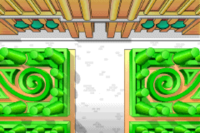
- A policewoman broadly says that the Spanish "dearly love" the Flamenco dance. However, it originated in and mostly thrives in the southern regions of the country.[38][39]
- Guernica is stated to be exhibited in the Prado Museum, despite having been moved to the Museo Nacional Centro de Arte Reina Sofía in 1992.[40]
- The image of the Prado Museum does not depict the statue of Diego Velázquez[41] at the front of the entrance (although it is visible in the video of the location).
- The pamphlet for the museum touts Guernica as Picasso's most famous painting, which is a claim that is rather difficult to make especially when the painter has numerous other paintings like Les Demoiselles d'Avignon that are also famed.[42]
- It is unclear what kind of cape the Matador's Cape actually is: a reporter describes it as "ornate" and a scientist says that the bullfighters wear it (indicating that it is a capote de paseo), while a tourist says that it is waved around during bullfights (indicating that it is a muleta).
- The scientist also says that bullfighting was used to train soldiers, when it was actually a spectacle reserved for aristocracy in the past.[43]
- The policewoman suggests that the cape belongs to the Ventas Bullring itself and not an individual bullfighter. This is despite how their entire outfit usually belongs to the bullfighter and how they dress in them outside of the bullring.[44]
- The Ventas Bullring's proper name is the Plaza de Toros de Las Ventas, or Las Ventas for short; a literal translation would be the Bullring of Las Ventas.
- The pamphlet for the bullring contends that bullfighting is almost as popular as, if not equal in popularity to, soccer. In reality, soccer is by-and-large the most popular sport throughout the country.[45][better source needed]
- The image for the Lion's Tail shows the lion's face.
- A scientist says that the Palacio de las Cortes was built in 1843, when it was actually from 1843 to 1850.[46]
- The Palacio de las Cortes is repeatedly called the "Spanish Parliament", despite that not being the name of the building and not all of the Cortes Generales convening there.
- The image for the palace is completely incorrect, as in reality, it does not have any hedges around it.
- The pamphlet for the palace claims that Francisco Franco died two years before Spain's 1978 constitution was ratified (i.e. in 1976), but he actually died in 1975.[47]
- A reporter says that "Montreal is an island in the St. Lawrence River", which is misleading: the player visits the city of Montreal, which is contained within, but distinct from, the Island of Montreal.
- A scientist says that Montreal means "royal mount", which is misleading: it actually takes its name from "Mount Royal" which is a mountain located in the center of the island, in the 16th century, "Réal" was a common way of saying "Royal" in French.
- The image of the Dome looks nothing like the actual dome of Saint Joseph's Oratory (perhaps coincidentally, it resembles the Montreal Biosphère).
- A reporter suggests that the Dome is only smaller than that of the one on St. Peter's Basilica in Rome; this is very much incorrect.[48]
- A policeman mentions 158 light bulbs on the mountain, where there are actually 30 (originally 240 before being changed in 1992).[49]
- A tourist says that the Olympic Stadium seats 70,000 people; its actual max capacity is around 60,000.[50]
- A reporter says that the Tilted Tower was built for the 1974 Olympics, and not the 1976 Summer Olympics as in reality; neither the summer nor winter versions of the Olympic Games were held in 1974. Additionally, the Titled Tower is actually known as the Montréal Tower in reality.[51]
- Most NPCs act as if the Soviet Union still exists, despite the game being released well after its dissolution on December 26, 1991. The sole exception is a tourist who gripes how "First it was Russia, then the Soviet Union, now it's Russia again!" This line further introduces an inaccuracy of its own, as the Soviet Union officially acknowledged Russia as a constituent republic (one of fifteen that made up the USSR), and "Russia" was frequently used in English-language vernacular as a byword for the entire union during its lifetime.
- While a boy points out GUM's letters in the Cyrillic script, the text misspells Cyrillic as "Cyrlik".
- The largest lake in Russia is said to be the Caspian Sea. However, the Caspian Sea is not fully enclosed within Russia, but merely connected to it, and even then, the largest lake to be connected to Russia is actually the Black Sea. The largest lake to be fully enclosed within Russia is Lake Baikal.
- The height of the central structure of St. Basil's Cathedral is stated to be 107 feet; it is officially 47.5 meters tall, around 156 feet.[52]
- The term "Holy Fool" is said to mean "saint" in Russian. This is incorrect: a holy fool refers to anyone who surrenders themselves to God at the expense of themselves and societal norms, even if they are not a saint, and the concept of Foolishness for Christ appears outside of Russia, even within the Bible itself.
- The pamphlet for the cathedral says that it was built in 1555, which is misleading when it was constructed from 1555 to 1560.[53]
- It also says that it was built by "Ivan III", while also calling him Ivan the Terrible. While Ivan the Terrible did order its construction, he was "Ivan IV"; Ivan III was his grandfather.
- It also says that he ordered the cathedral built to honor Basil the Blessed. It was actually built to commemorate his recent victory in conquest; Basil's name was only attached to the building in the seventeenth century.[54] While St. Basil does have a mausoleum within the cathedral, it was only constructed in 1588.[52]
- Despite what its image shows, Lenin's Tomb is made out of marble and granite and not a metallic chrome.
- The image for the Guard's hat pin does not depict a red star behind the hammer and sickle as it should.
- The third question needed to prove that the Guard's hat pin is genuine claims that, prior to the October Revolution, Russia was led by "the royal family," with "the emperor" being the incorrect option. In actuality, while a royal family did exist, the Emperor of all the Russias was indeed the sole ruler of the Russian Empire. Additionally, the emperor was deposed in the February Revolution rather than the October Revolution, the latter of which instead ousted the Russian Republic that briefly succeeded the empire.
- The October Revolution led by Vladimir Lenin is generically called the "Communist revolution" (which is an issue when there exists several communist revolutions).
- It is claimed that the hammer and sickle was "the" symbol for Communist Russia. Although the hammer and sickle is widely associated with communism, there exist other symbols with a connection to Communist Russia, such as the red star, as depicted above the hammer and sickle on the Flag of the Soviet Union.
- The names "Bolshoi Ballet" and "Bolshoi Theater" are used interchangeably (for example, it is stated that the Bolshoi Ballet has been closed for visitors). However, the Bolshoi Ballet is a dance troupe, whereas the Bolshoi Theater is an actual building.
- It is claimed that the Bolshoi Theater "sells out every show." This is despite a period where it struggled to gather an audience,[55] which is to say nothing of canceled shows in the past.[56]
- Its pamphlet attributes the introduction of realism to ballet with one of the Bolshoi Ballet's directors, Alexander Alexeyevich Gorsky; realism within ballet can actually be traced to the 1830s.[57]
- It also claims that Gorsky served as the director until 1942, despite him dying in 1924.[55]
- It also claims that the theater was constructed in 1856; it was actually in 1780, with restorations taking place until 1856 after a fire in 1853.[58]
- The image for the Moscow Metro M depicts its neon as an unconnected line, although the sign is actually a connected outline of the M.[59]
- A scientist says that the Moscow Metro was built by Joseph Stalin. Although he gave the project its final approval, it was not his idea, and he had no hand in the project in any way otherwise.[60]
- The metro's pamphlet claims that the Moscow Metro has "not much competition" when it comes to underground rapid transit, which is odd when there existed over 80 metro systems at the time of the game's release.[61]
- It is stated that the Moscow Metro had 132 stations, a number it had reached in 1986[62] when in reality it had 149 at the time.[63]
- A tourist says that the Emperor's Bell weighs 210 tons. Officially, it is about 202 tons.[64]
- A reporter claims that Ivan III had the bell placed in the Ivan the Great Bell Tower. This tower has 22 bells, none of which are the Emperor's Bell; it has never once been suspended or rung.[65]
- A policewoman says that the bell has been in the Kremlin since the 17th century. It has actually been there since it was constructed in 1735 (i.e. the 18th century);[65] it was also moved to its current location in 1836.[66]
- A boy claims that the Tsar Cannon is the largest one ever created. Though it is the largest bombard, there exists both the Little David and the Mallet's Mortar.[67]
- A scientist says that the cannonballs for the Tsar Cannon were cast alongside it in 1586; in reality, they were cast in the 19th century.[68]
- The pamphlet for the Kremlin states that the cannon was cast by "Andrey Shchokhov", whose name is actually Andrey Chokhov.
- Many of the buildings in Nairobi are old and dilapidated, with some even being held up with sticks and straw roofs; this is a far cry from the contemporary city in reality.
- A tourist said that he had to fight off lions and elephants when traveling from Mombasa to Nairobi, which is odd given that there is a highway that directly connects the two cities.
- A scientist comments that female Asian elephants cannot grow tusks, which is incorrect. Some of them have smaller tusks, called "tushes", that are notably more brittle than males' tusks, but are still present. The scientist also implies that male Asian elephants always grow tusks, which is also incorrect.[69]
- The pamphlet for the Nairobi National Park describes the area as "undisturbed", which is incorrect given the proximity of human civilization and how it interferes with the area.[70]
- The pamphlet for the Maasai village says that Africa has "more than 70 tribes", which is a gross understatement: estimates often place more than 3,000 tribes in Africa.[71][72]
- The pamphlet also says that new warriors are initiated as soon as they turn fifteen, but this process can begin anywhere from the ages of fourteen to eighteen.[73]
- The National Museum of Kenya's actual name is the Nairobi National Museum.[74]
- The Human Skull was discovered by Bernard Ngeneo, a member of Richard Leakey's expedition team, and not Leakey himself.[75]
- Also, unlike what the game claims, the skull depicts a member of the Homo rudolfensis species and not Homo habilis (although initial claims thought the skull to be Homo habilis, it was first classified as a new species in 1986[76]).
- The revolving restaurant at the top of the Kenyatta International Conference Center shut down in the 1980's,[77] and yet it is still depicted as being operational in-game.
- A scientist says that construction on the center finished in 1970, when it was actually in 1973.[78]
- Also, the building is 28 stories tall, and not 27 as the pamphlet says.[78]
- The center is also described as being a "United Nations headquarters". Although the fourth United Nations Conference on Trade and Development did take place at the center, this was only for the purposes of the assembly; the building was never used as a headquarters.[79][80]
- The pamphlet for the center describes Jomo Kenyatta solely as a "freedom fighter," falsely implying that he participated in armed conflict for the cause of Kenyan independence. In reality, Kenyatta was a nonviolent activist who vocally opposed others' brutal methods.[81] Beyond that, he is best known as the first Prime Minister and President of Kenya, and not as a "freedom fighter".
- King Kong is stolen from the Empire State Building and must be returned to its supposed rightful place, despite King Kong being entirely fictional, though this is mentioned in the game.
- An NPC can say, "So nice they named it twice, NY, NY." While this is colloquially acceptable, this technically refers to the borough of Manhattan specifically.
- The same NPC can say, "Catch a cab, or take the subway, not many private cars in this island city." This implies that it is on a single island when in reality the city is mostly part of an archipelago (with the main exception being the Bronx, located on the mainland). The islands are not represented on the Globulator, though the City Map and artifacts indicate that it is geographically centered around Manhattan.
- The Tricolor is stolen from the top of the Eiffel Tower, but in real life, it was never flown there to begin with.
- A boy mentions that France is the biggest country in Europe after the Soviet Union has broken up; in reality, Russia's European portion and Ukraine are each larger than France.[82]
- A tourist misspells "aéroport" as "airport" in L'Airport d'Orly.
- A business woman mentions obtaining French fries, though their origin as a French food has been disputed, with sources citing possible origins in Belgium or Spain.[83]
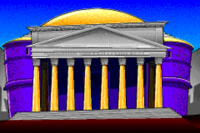
- A tourist uses the name "Latin Manhattan" for Rome. This has never been a nickname for the city; in fact, it is an alcoholic drink.[84] However, the nickname has been associated with Buenos Aires.[85]
- The Colosseum's pamphlet lists its circumference as 573 yards, and not 544 meters (about 594 yards) as in reality.[86]
- The Michelangelo's Paintbrush item is touted as if it was his sole painting tool; there is no evidence that Michelangelo used a single paintbrush for the entirety of the Sistine Chapel, nor is there a paintbrush that is particularly famous for being used by him.
- A scientist says that "Sistine" means six in Latin. Six in Latin is "sex" or "sextus"; "Sistine" refers to any of the Sixtus popes, although "Sixtus" is derived from "sextus".[87]
- The Sistine Chapel's pamphlet describes Michelangelo painting the Sistine Chapel ceiling's 10,000 square feet. He actually painted around 534 square meters (about 5,747 square feet).[88]
- It also describes him as having painted while lying down, which is a common misconception. He actually painted while standing up.[89]
- The Trevi Fountain's pamphlet says that anyone who throws a coin over their shoulder and into the fountain is guaranteed to return to Rome. Although technically correct, this is missing details, as the myth specifies that a person must throw a coin with their right hand over their left shoulder.[90]
- The Trevi is also said to be the oldest fountain in Rome, which is incorrect due to the Fountain in Piazza Santa Maria in Trastevere.
- The Pantheon is stated to have eight columns when it actually has sixteen.[91]
- Its pamphlet also says that it was made out of brick and marble, completely ignoring how the Pantheon was largely constructed with concrete.[92]
- The pamphlet for the Spanish Steps says that it was paid with "French" money, this is incorrect. The money was left by French diplomat Étienne Gueffier in his will, but it was in scudi, a depreciated Italian coin.[93]
- It also says that the Spanish embassy that lent its name to the stairs was an embassy for "the Vatican"; it is an embassy to the Holy See, which is distinct from Vatican City.[94]
- Also, the Spanish Steps only have 135 steps,[95] and not 328 as the game claims.
- A scientist says that "no one" was interested in San Francisco until the California Gold Rush in 1848, which is a rather flippant statement. Although the gold rush brought droves of new people to the settlement, it still had a sizable population; it was the initially steady influx of immigrants that allowed people to explore the surrounding territory in the years leading up to the gold rush.[96]
- Despite there being multiple fog horns along the Golden Gate Bridge, only one Fog Horn appears as an item.[97]
- A boy states that the Bridge is 260 feet above the San Francisco Bay, although it is actually 220 feet above water from bridge itself and 500 feet above land from the top of the tower.[98]
- It is stated that the Bridge was built in 1937, which is misleading when construction started in 1933 and finished in 1937.[99]
- The pamphlet for the bridge says that fog covers it on "most days"; fog usually rolls over during the summer.[100]
- The Coit Tower was purportedly built in 1934; it was actually in 1933.[101]
- The Tower's pamphlet says that its namesake is "Lillian Hitchcock Coit"; her name is actually Lillie Hitchcock Coit.
- It also claims that Lillie donated $125,000 specifically to build the tower. Firstly, she donated $118,000 (although this expanded to $125,000 due to additional city funds), and she also donated the money to city for the general purpose of beautification, and not solely for the tower.[102]
- The game is insistent that the prisoners in Alcatraz wore striped prison uniforms, despite this never being the case.[103][104]
- The pamphlet for Alcatraz says that it is named after the Spanish word for "pelican". This is misleading, as the word has since become archaic (the contemporary word for "pelican" is "pelicano").
- Gripmen[105] are consistently called "gripsmen".
- The pamphlet for the Cable Car says that they weigh six tons, when they actually weight 15,500 pounds (about 7.75 tons).[106]
- It also says that they move consistently at 9 miles per hour; it is actually 9.5 miles per hour.[107]
- Despite what the DOS image for the Transamerica Pyramid depicts, it is not slanted from the ground at a 45° angle.
- The Transamerica Pyramid is on Montgomery Street, and not Columbus Avenue as its pamphlet claims.
- Its pamphlet only mentions that it is on a concrete base, disregarding the steel that was also used.[108]
- A woman explains that "I always thought Australia's capital was spelled like "Sid's-Knee"", referring to Sydney, when in reality it is Canberra that is Australia's capital, a fact which is stated by another NPC in the game.
Gallery
- Main article: Gallery:Mario is Missing!
Mario meeting Luigi (scene by Dan Guerra[109])
Quotes
- Main article: List of Mario is Missing! quotes
Pre-release and unused content
Unused data
Dialogue intended for the ending of the game is in the CD-ROM Deluxe edition of the game: Game ending reconstructed with voices.
It also appears that Lemmy and Morton were going to appear in game, as their unused dialogue was found in the CD-ROM Deluxe version's data (they are the only Koopa Kids who do not appear in at least one version of the game). In the final game, Lemmy is mentioned as having run off to play in the snow while Morton is said to watch the others.[citation needed] Furthermore, the CD-ROM release of the game features Lemmy on the cover despite him not appearing in the game.[110]
The CD-ROM Deluxe edition's files also contain live-action footage featuring landmarks of several cities that are not visited in-game. These include:
- Wat Phra Kaew, the Chao Phraya River, and Wat Pho in Bangkok, Thailand;
- Taft Avenue, the Intramuros, Rizal Park, and the Malacañang Palace in Manila, Philippines;
- Hotel Gellért, the Széchenyi Chain Bridge, the Fisherman's Bastion, and the Hero's Square in Budapest, Hungary;
- Mount Royal, the Olympic Stadium, Saint Joseph's Oratory, and the Notre-Dame Basilica in Montreal, Canada;
- Victoria Peak, the Tiger Balm Garden, the The Excelsior, and the HSBC Building in Hong Kong, China;
- The Sunda Kelapa port and the National Monument in Jakarta, Indonesia;
- The White House, the Washington Monument, the Lincoln Memorial, and the United States Supreme Court Building in Washington, D.C., United States of America;
- The Government Palace and the Plaza Mayor in Lima, Peru;
- Al-Kāẓimiyyah and the Tigris river in Baghdad, Iraq;
- Suomenlinna, Helsinki Central Station, Temppeliaukio Church, and the Sibelius Monument in Helsinki, Finland;
There are exactly ten cities that go unused; considering the unused dialogue for Lemmy and Morton and how every other Koopa Kid guards five cities of their own, it is likely that they were meant to guard the unused cities.
There are also unused voice clips that reference locations that are not in-game, including those that do not even have footage. Beyond the previously mentioned landmarks, these include: the Lacqueur Pavilion in Bangkok; the Bogor Botanical Gardens and the National Museum of Indonesia in Jakarta; the Cathedral of Lima in Lima; and the Archway of Ctesiphon near Baghdad. The Notre-Dame Basilica in Montreal is the only landmark to have a video clip and not a corresponding audio clip. Also, the White House and the Supreme Court are the only ones to have unique messages: "We are attempting to achieve world peace and are unable to take your call," and "We are hearing an important case and are unable to take your call," respectively.
Reception
Steve Merrett and Robert Whitfield of Nintendo Magazine System both commend the game for succeeding in being both educational and entertaining, unlike most other educational games.[111] They also praise the variety of locations to explore and objects to collect, though they criticize that the core gameplay is a bit repetitive and the city graphics are lack-luster. While they acknowledge that Super Mario fans and older demographics may not derive much enjoyment from the game, they do recommend the game to those who have an interest in geography or under the age of eleven.
Electronic Gaming Monthly's "Review Crew" gives the game a combined average score of 5.75/10.[112] Steve Harris, Ed Semrad, and Martin Alessi all recommend the game to only young audiences and praise the educational content. However, Alessi criticizes that the game has very little challenging action sections. He points out that even boss fights "offer little to no challenge". Sushi-X, who gives the game the lowest score of 3/10, criticizes that the game plays like a slow Super Mario game and that the graphics were not lively enough to keep him interested.
Sales
In an August 1993 press release, Software Toolworks claimed that sales of the console versions of Mario is Missing! exceeded $7,000,000 for the fiscal quarter and that the game boosted the company's revenue during a slow quarter.[113] One employee also claims that the game sold over one million units.[114]
Legacy
Luigi's sprite started the Internet meme "Weegee", as well as Mario being "Malleo" and Yoshi being called "Yushee".
References to other games
- Super Mario Bros. - The Koopas look similar to their Super Mario Bros. artwork.
Staff
- Main article: List of Mario is Missing! staff
Names in other languages
| Language | Name | Meaning | Notes |
|---|---|---|---|
| French | Mario a disparu ![?] | Mario has disappeared! | |
| German | Mario wird vermißt![?] | Mario is missing! |
Trivia
- According to the MS-DOS release, Mario has a fear of the dark, which he is increasingly worried that Bowser will exploit his fear and haunt him. This is not seen or referenced in other games, except potentially Hotel Mario when he stutters (presumably in fear) before entering the cave hotel without a flashlight.
- Mario's voice is inconsistent in the CD-ROM Deluxe edition. Sometimes he has an Italian accent, sometimes he has a New York accent with a slight hint of Italian. The game's data includes all of his lines in both accents, so it is likely that the developers accidentally assigned some from both.
- Luigi, however, has a consistent New York accent.
- Although some Super Mario media supply voice acting for the Koopalings (namely the DiC cartoons), the CD-ROM Deluxe edition is the first game to have them voiced, as well as the only game to actually supply them with dialogue until the release of Mario & Luigi: Paper Jam. Later games starting with New Super Mario Bros. Wii have the Koopalings voiced, although it is limited to roars and grunts.
- The CD-ROM Deluxe release features a non-standard CD-ROM logo, which unusually depicts a CD design only widely utilized by West German manufacturer PolyGram and its successor plants in France, reunified Germany, and the United States from 1982 to the mid-1990s. This design is distinguished by the disc hub, which is fully mirrored (appearing black in scans and the logo) apart from a laser-etched band along the circumference. Why this specific design was used instead of a more generic clear-hubbed disc is unknown.
References
- ^ Bryson, Bill (May 7, 2013). "S" - Bryson's Dictionary of Troublesome Words: A Writer's Guide to Getting It Right. Doubleday Canada. ISBN 978-0385679961. Retrieved January 21, 2018.
- ^ January 11, 2018. "Myanmar Profile - Timeline". BBC News, BBC. Retrieved January 21, 2018.
- ^ Hall, Thomas (December 16, 2003). "Athens" - Planning Europe's Capital Cities: Aspects of Nineteenth-Century Urban Development. Routledge. ISBN 978-1135829032. Page 114. Retrieved February 8, 2018.
- ^ 2007. "Athens History". Athens Greece Guide.
- ^ Langmea, Donald; Garnaut, Christine (December 6, 2001). "Erechtheion" - Encyclopedia of Architectural and Engineering Feats. ABC-CLIO. ISBN 978-1576071120. Page 110–111. Retrieved February 8, 2018.
- ^ 2017. "Caryatid". British Museum, Trustees of the British Museum. Retrieved February 8, 2018.
- ^ Nefasdicere (March 4, 2007). "J. Matthew Harrington, Personal Digital Image". Wikimedia Commons, Wikimedia Foundation. Retrieved February 7, 2018.
- ^ Boatwright, Mary Taliaferro (2000). "Athens, Smyrna, and Italica" - Hadrian and the Cities of the Roman Empire, illustrated, reprint, revised ed.. Princeton University Press. ISBN 9780691094939. Page 147. Retrieved February 7, 2018.
- ^ a b Camp, John M. (2001). "Roman Athens" - The Archaeology of Athens, illustrated, reprint ed.. Yale University Press. ISBN 978-0300101515. Page 201–202. Retrieved February 8, 2018.
- ^ "Athens, Parthenon (Building)". Perseus.tufts.edu, Tufts University. Retrieved February 7, 2018.
- ^ Burkert, Walter (1985). "Athena" - Greek Religion, reprint ed.. Harvard University Press. ISBN 9780674362819. Page 139. Retrieved February 8, 2018.
- ^ Beard, Mary (December 9, 2010). "'The Template They Call the Parthenon'." - The Parthenon, revised ed.. Harvard University Press. ISBN 978-1847650634. Page 42. Retrieved February 8, 2018.
- ^ a b Eddy, Samuel (Winter 1977). "The Gold in the Athena Parthenos" - American Journal of Archaeology, vol. 81, no. 1, doi:10.2307/503656. The University of Chicago Press. Page 107–111. Retrieved February 8, 2018.
- ^ Dioghaltas (January 9, 2017). "The fustanella. What is it? And why it isn't a Kilt" - Nuairathigairduinethigairuile. Wordpress. Retrieved February 8, 2018.
- ^ September 13, 2017. "Why Athens" - "Evzones Uniform, the Costume of an Elite Greek Soldier". Why Athens. Retrieved February 7, 2018.
- ^ Adare, Sierra (2007). "Skirts for all" - Greece: The Culture, illustrated, revised ed.. Crabtree Publishing Company. ISBN 978-0778793106. Page 20.
- ^ Pariona, Amber (November 3, 2017). "Which Are the 10 Largest Asian Countries By Area?". WorldAtlas.
- ^ Wang, Yi (July 20, 2016). "Dadu in the Yuan Dynasty" - A Century of Change: Beijing's Urban Structure in the 20th Century, illustrated ed.. Springer International Publishing. ISBN 978-3319396330. Page 14. Retrieved January 26, 2018.
- ^ Fang, Jun (May 23, 2014). China's Second Capital – Nanjing under the Ming, 1368-1644. Routledge. ISBN 978-1135008444. Retrieved January 26, 2018.
- ^ a b November 26, 2010. "People's Daily Online" - "The History of Tiananmen Gate". eBeijing. Retrieved January 26, 2018.
- ^ "Tian'anmen -- the Gate of Heavenly Peace". China.org.cn, China Internet Information Center. Retrieved January 26, 2018.
- ^ 2010. "Designer of Tiananmen". Beijing Attractions. Retrieved January 26, 2018.
- ^ Miles, Kathy A. (2004). "Viewing Earth: How Much Can Be Seen from Space?". Starryskies.com. Retrieved January 24, 2018. (Archived February 12, 2006, 05:21:43 UTC via Wayback Machine.)
- ^ Sweeney, Chris (August 11, 2010). "The World's 18 Strangest Gardens". Popular Mechanics.
- ^ Adams, Cecil (January 31, 1986). "Is the Great Wall of China the Only Manmade Object You Can See from Space?". The Straight Dope. Retrieved January 24, 2018.
- ^ Mikkelson, David (July 20, 2014). "Can You See the Great Wall of China from the Moon?". Snopes.com. Retrieved January 24, 2018.
- ^ "Seven Wonders of the Medieval World". Unmuseum.org.
- ^ Oberheu, Caroline (September 6, 2017). "The 7 Wonders of the Medieval World". WorldAtlas.
- ^ Slavicek, Louise Chipley (2009). "The Human Cost of Building the First Great Wall" - The Great Wall of China. Infobase Publishing. ISBN 978-1438121413. Page 33–35. Retrieved January 26, 2018.
- ^ Evans, Thammy (2006). "Myths" - Great Wall of China: Beijing & Northern China, illustrated ed.. Bradt Travel Guides. ISBN 978-1841621586. Page 11. Retrieved January 26, 2018.
- ^ "Labor Force of Great Wall". Travelchinaguide.com. Retrieved January 27, 2018.
- ^ "Qin Dynasty Great Wall". travelchinaguide.com. Retrieved January 27, 2018.
- ^ "Monument to the People's Heroes". China.org.cn, China Internet Information Center. Retrieved January 27, 2018.
- ^ Li, Lillian M., et al. (April 29, 2008). "Mao's Beijing and Socialist Transformation" - Beijing: from Imperial Capital to Olympic City. Palgrave Macmillan. ISBN 978-0230605275. Page 177–178. Retrieved January 27, 2018.
- ^ "The Hall of Prayer for Good Harvests". en.tiantanpark.com. Retrieved January 26, 2018.
- ^ April 26, 2016. "Big Ben 'bongs' to be silenced for £29m refurbishment". BBC News. Retrieved December 6, 2019.
- ^ Allen Brown, Reginald; Curnow, P (1984). Tower of London, Greater London: Department of the Environment Official Handbook, Her Majesty's Stationery Office. ISBN 978-0-11-671148-9.
- ^ "Flamenco History". All About Spain (red2000.com). Retrieved February 11, 2018.
- ^ Ruiz, Ana (2007). "Flamenco" - Vibrant Andalusia: The Spice of Life in Southern Spain. Algora Publishing. ISBN 978-0875865393. Page 71–90. Retrieved February 11, 2018.
- ^ September 15, 2009. "History". Museodelprado.es. Retrieved February 10, 2018. (Archived June 29, 2012, 15:40:10 UTC via Wayback Machine.)
- ^ Carro, Javier (November 9, 2004). "Diego Velázquez". Wikimedia Commons, Wikimedia Foundation. Retrieved February 12, 2018.
- ^ Halle, Howard (February 12, 2016). "The 10 Best Picasso Paintings and Sculptures, Ranked". Time Out New York, Time Out Group Plc. Retrieved February 12, 2018.
- ^ De Larra, Mariano José. "Corridas De Toros". Fundación Biblioteca Virtual Miguel De Cervantes. Retrieved February 11, 2018.
- ^ Kennedy, A.L. (October 31, 2010). "Acts of Faith - On Bullfighting. Random House. ISBN 978-1409002284. Page 100–101. Retrieved February 12, 2018.
- ^ October 28, 2014. "Football in Spain". Just Landed. Retrieved February 12, 2018.
- ^ "Documentos Elecciones 31 De Agosto De 1850". Congreso.es (Spanish). Retrieved February 11, 2018.
- ^ The Local (November 20, 2015). "On This Day in 1975: Spain's Dictator General Francisco Franco Died". thelocal.es, The Local. Retrieved February 12, 2018.
- ^ Wikipedia contributors (January 4, 2018). "List of largest domes". Wikipedia, The Free Encyclopedia. Retrieved February 5, 2018.
- ^ Wilton, Katherine (January 6, 2015). "The Cross on Mount Royal: a Storied History". Montreal Gazette. Retrieved February 4, 2018.
- ^ "The Stadium". Parc Olympique. Retrieved February 4, 2018.
- ^ January 6, 2015. "The Cross on Mount Royal: a Storied History". Parc olympique (English). Retrieved June 21, 2024. (Archived April 14, 2024, 03:37:06 UTC via Wayback Machine.)
- ^ a b "Церковь Покрова Пресвятой Богоматери". Панорама 360 (Russian). Retrieved January 28, 2018.
- ^ Berton, Kathleen (1977). "St. Basil's" - Moscow: An Architectural History. St. Martin's Press. Page 40–43. Retrieved January 30, 2018.
- ^ Shvidkovsky, Dmitry; Wood, Antony (translator) (2007). "St Basil's Cathedral and the Architectural Tastes of Ivan the Terrible" - Russian Architecture and the West illustrated ed.. Yale University Press. ISBN 978-0300109122. Page 126.
- ^ a b Michelman, Fran (2007). "Alexander Gorsky". Abt.org.
- ^ July 11, 2017. "Bolshoi Theatre Postpones Rudolf Nureyev Ballet". BBC News, BBC. Retrieved January 30, 2018.
- ^ Kisselgoff, Anna (May 4, 1985). "HOW REALISM IN MIME AND ROMANTIC BALLET BEGAN". The New York Times. Retrieved January 30, 2018.
- ^ 2015. "History". Bolshoi.ru. Retrieved January 30, 2018.
- ^ Shcherbakov, Mikhail (Vokabre). "Marksistskaya Station Entry, Moscow Metro Sign (Вход На Станцию Марксистская, Знак Московского Метро) (5062480611).Jpg". Wikimedia Commons, Wikimedia Foundation. Retrieved January 30, 2018.
- ^ September 13, 2017. "Building the Moscow Metro, or the brief history of the underground city". Moscow City Web Site (Mos.ru). Retrieved January 30, 2018.
- ^ Wikipedia contributors (January 31, 2018). "List of metro systems". Wikipedia, The Free Encyclopedia. Retrieved January 31, 2018.
- ^ Metro Liner (February 6, 2022). Evolution of the Moscow Metro 1935-2021 (animation). YouTube. Retrieved April 29, 2022.
- ^ Metro Liner (February 6, 2022). Evolution of the Moscow Metro 1935-2021 (animation). YouTube. Retrieved April 29, 2022.
- ^ "Tsar Bell". Kreml.ru. Retrieved January 28, 2018.
- ^ a b Timofeychev, Alexey (October 24, 2017). "The Tsar Bell: How Russian Craftsmen Made the Impossible". Russia Beyond. Retrieved January 31, 2018.
- ^ Richardson, Dan; Reynolds, Jonathon (February 2, 2009). "Red Square and the Kremlin" - The Rough Guide to Moscow. ISBN 978-1848361782. Page 85. Retrieved January 31, 2018.
- ^ Burbach, David (February 6, 2015). "The 10 Biggest Guns in History Ranked by Caliber". Thrillist. Retrieved January 31, 2018.
- ^ Chernov, Vladimir; Romashkevich, I. A. (editor); Butler, J. C. (translator) (1979). "First Day" - Moscow: a Short Guide. Moscow Progress Publishers. Page 56. Retrieved January 28, 2018.
- ^ August 15, 2017. "Asian elephant" - Smithsonian's National Zoo. The Smithsonian. Retrieved January 24, 2018.
- ^ Morell, Virginia (1996). "Surrounded! - Civilization Is Encroaching on Nairobi National Park in Kenya - Nairobi's Wild Side" - International Wildlife, vol. 26, no. 4. Findarticles.com. Retrieved January 24, 2018. (Archived January 15, 2005, 23:03:46 UTC via Wayback Machine.)
- ^ "African Tribe List". interesting-africa-facts.com. Retrieved January 24, 2018.
- ^ "People of Africa". africanholocaust.net. Retrieved January 24, 2018.
- ^ Temps, Dietmar. "Morani - The Warriorhood Tradition of the Kenyan Tribes". dietmartemps.com. Retrieved January 24, 2018.
- ^ "Nairobi National Museum". National Museums of Kenya. Retrieved January 22, 2018.
- ^ Leakey, R. E. F. (April 13, 1973). "Evidence for an Advanced Plio-Pleistocene Hominid from East Rudolf, Kenya." - Nature, vol. 242, no. 5398, doi:10.1038/242447a0. Page 447–450. Retrieved January 24, 2018.
- ^ Smithsonian's National Museum of Natural History (March 1, 2010). "Homo rudolfensis". The Smithsonian Institution's Human Origins Program, The Smithsonian.
- ^ Kamau, Macharia (February 19, 2012, 00:00). "Historical KICC Hotel Back to Life". standardmedia.co.ke (The Standard). Retrieved January 23, 2018.
- ^ a b "administrator" (June 7, 2013). “The Kenyatta International Conference Centre.”. Buildesign.co.ke. Retrieved January 24, 2018.
- ^ Mochorwa, Silvia (January 8, 2016). "Kenya's Mice Tourism Goes a Notch Higher". kicc.co.ke. Retrieved January 23, 2018.
- ^ May 5-31, 1976. Proceedings of the United Nations Conference on Trade and Development FOURTH SESSION Nairobi. United Nations Conference on Trade and Development. Retrieved January 23, 2018.
- ^ January 21, 2018. "Kenyatta, Jomo 1891(?)–1978.". Contemporary Black Biography - Encyclopedia.com. Retrieved January 23, 2018.
- ^ The Largest Countries in Europe. World Atlas. Retrieved April 10, 2019.
- ^ Rupp, Rebecca (January 8, 2015). Are French Fries Truly French?. National Geographic. Retrieved April 10, 2019.
- ^ Dietz, Frieda Meredith (1948). "Latin Manhattan" - Let's Talk Turkey: Adventures and Recipes of the White Turkey Inn. Dietz Press. Page 79. Retrieved January 21, 2018.
- ^ Lloyd, Harvey (1999). "The Appeal of Buenos Aires" - Voyages: The Romance of Cruising. Dorling Kindersley. ISBN 0-7894-4617-0. Page 115. Retrieved January 21, 2018.
- ^ Ruhl, Marcus (2013). "Ancient Roman Colosseum in Rome". Ancient Roman Colosseum: History, Architecture, Purpose. Retrieved January 21, 2018.
- ^ Harper, Douglas. "Sistine (Adj.)". Online Etymology Dictionary. Retrieved January 21, 2018.
- ^ Bambach, Carmen C. (November 5, 2017). "A New Artistic Vision" - Michelangelo: Divine Draftsman and Designer. Metropolitan Museum of Art. ISBN 978-1588396372. Page 83. Retrieved January 21, 2018.
- ^ April 22, 1989. "Michelangelo Didn't Lie Down on the Job". The New York Times. Retrieved January 21, 2018.
- ^ "Coins into the Trevi Fountain". WelcomeToRome.net. Retrieved January 21, 2018.
- ^ "Interesting Facts About Rome's Pantheon. Rolling Rome. Retrieved January 21, 2018.
- ^ Moore, David (1995). "The Pantheon". Romanconcrete.com.
- ^ Elling, Christian (October 26, 1975). Rome: The Biography of Her Architecture from Bernini to Thorvaldsen, illustrated ed.. Westview Press. ISBN 978-0891585145. Page 328. Retrieved January 21, 2018.
- ^ Chepkemoi, Joyce (June 21, 2017). "What Is the Difference Between the Vatican City and the Holy See?". WorldAtlas. Retrieved January 21, 2018.
- ^ Edwards, Catherine (September 23, 2016). "Eight Things You Should Know about Rome's Spanish Steps". The Local. Retrieved January 21, 2018.
- ^ Richards, Rand (2007). "The Gold Rush (1848-1849)" - Historic San Francisco: A Concise History and Guide, illustrated ed.. Heritage House Publishers. ISBN 978-1879367050. Page 57–62. Retrieved February 5, 2018.
- ^ "Fog Horns". Golden Gate Bridge Highway & Transportation District (goldengatebridge.org). Retrieved February 5, 2018.
- ^ "Bridge Design and Construction Statistics". Golden Gate Bridge Highway & Transportation District (Goldengatebridge.org). Retrieved February 3, 2018.
- ^ Weingroff, Richard (June 27, 2017). "Two Bay Area Bridges - The Golden Gate and San Francisco-Oakland Bay Bridge". U.S. Department of Transportation/Federal Highway Administration (fhwa.dot.gov). Retrieved February 5, 2018.
- ^ Serrell, Allison (January 17, 2018). "What Causes the Fog in San Francisco?". TripSavvy. Retrieved February 5, 2018.
- ^ "Coit Tower". The Official San Francisco Recreation and Park Department Website. Retrieved February 4, 2018.
- ^ United States, Department of the Interior, San Francisco (2008). "Background" - National Register of Historic Places Continuation Sheet [Coit Tower]. NPGallery. Retrieved February 5, 2018.
- ^ "The Military Prison" - Alcatraz History. OceanView Publishing. Retrieved February 2, 2018.
- ^ MacDonald, Donald; Nadel, Ira (February 15, 2012). "From Fortress to Prison" - Alcatraz: History and Design of a Landmark, illustrated ed.. Chronicle Books. ISBN 978-1452101538. Page 61. Retrieved February 2, 2018.
- ^ 2018. "How Cable Cars Work". San Francisco Market Street Railway (streetcar.org). Retrieved February 5, 2018.
- ^ "Powell Street Cable Car". Friends of the Cable Car Museum (cablecarmuseum.org). Retrieved February 5, 2018.
- ^ "The Brakes". Friends of the Cable Car Museum (cablecarmuseum.org). Retrieved February 5, 2018.
- ^ 2018. "Pyramid Facts". Pyramidcenter.com, Transamerica Corporation. Retrieved February 5, 2018.
- ^ Dan Guerra's personal website. EarthLink. Retrieved September 11, 2017. (Archived April 30, 2003, 22:13:07 UTC via Wayback Machine.)
- ^ July 21, 2017. Lemmy Koopa appears on the cover of the CD version of Mario is Missing despite not being present in any of the four versions of the game.. X.
- ^ November 1993. Nintendo Magazine System (AU) Issue #8. Page 28-29.
- ^ June 1993. Electronic Gaming Monthly #47. Page 28.
- ^ July 19, 2014. "Software Toolworks reports 41-percent gain in revenues for the June quarter; quarterly loss narrows to -2 cents per share.". PR Newswire Association LLC.
- ^ Henrik Markarian (former Director of Software Development at The Software Toolworks) profile. LinkedIn. Retrieved September 9, 2017.
| Super Mario games | |||
|---|---|---|---|
| Platformers | Super Mario series | Main | Super Mario Bros. (1985, NES) • Super Mario Bros.: The Lost Levels (1986, FDS) • Super Mario Bros. 2 (1988, NES) • Super Mario Bros. 3 (1988, NES) • Super Mario Land (1989, GB) • Super Mario World (1990, SNES) • Super Mario Land 2: 6 Golden Coins (1992, GB) • Super Mario 64 (1996, N64) • Super Mario Sunshine (2002, GCN) • New Super Mario Bros. (2006, DS) • Super Mario Galaxy (2007, Wii) • New Super Mario Bros. Wii (2009, Wii) • Super Mario Galaxy 2 (2010, Wii) • Super Mario 3D Land (2011, 3DS) • New Super Mario Bros. 2 (2012, 3DS) • New Super Mario Bros. U (2012, Wii U) • Super Mario 3D World (2013, Wii U) • Super Mario Maker (2015, Wii U) • Super Mario Run (2016, iOS/iPadOS/Android) • Super Mario Odyssey (2017, Switch) • Super Mario Maker 2 (2019, Switch) • Super Mario Bros. Wonder (2023, Switch) |
| Reissues | VS. Super Mario Bros. (1986, VS) • Super Mario Bros. (1986, G&W) • All Night Nippon: Super Mario Bros. (1986, FDS) • Super Mario Bros. (1989, NGW) • Super Mario Bros. 3 (1990, NGW) • Super Mario World (1991, NGW) • Super Mario All-Stars (1993, SNES) • Super Mario All-Stars + Super Mario World (1994, SNES) • BS Super Mario USA (1996, SNES) • BS Super Mario Collection (1997, SNES) • Super Mario Bros. Deluxe (1999, GBC) • Super Mario Advance (2001, GBA) • Super Mario World: Super Mario Advance 2 (2001, GBA) • Super Mario Advance 4: Super Mario Bros. 3 (2003, GBA) • Classic NES Series (2004–2005, GBA) • Super Mario 64 DS (2004, DS) • Super Mario All-Stars Limited Edition (2010, Wii) • Super Mario Maker for Nintendo 3DS (2016, 3DS) • New Super Mario Bros. U Deluxe (2019, Switch) • Super Mario 3D All-Stars (2020, Switch) • Game & Watch: Super Mario Bros. (2020, G&W) • Super Mario 3D World + Bowser's Fury (2021, Switch) | ||
| Related games | Super Mario Bros. Special (1986, computer) • Wario Land: Super Mario Land 3 (1994, GB) • Super Mario World 2: Yoshi's Island (1995, SNES) • New Super Luigi U (2013, Wii U) • Captain Toad: Treasure Tracker (2014, Wii U) • Super Mario Bros. 35 (2020, Switch) • Bowser's Fury (2021, Switch) | ||
| Canceled games | Super Mario's Wacky Worlds (CD-i) • Mario Takes America (CD-i) • VB Mario Land (VB) • Super Mario 64 2 (N64DD) | ||
| Donkey Kong series | Donkey Kong (1981, arcade) • Donkey Kong (1994, GB) | ||
| Mario vs. Donkey Kong series | Mario vs. Donkey Kong (2004, GBA) • Mario vs. Donkey Kong 2: March of the Minis (2006, DS) • Mario vs. Donkey Kong: Minis March Again! (2009, DSiWare) • Mario vs. Donkey Kong: Mini-Land Mayhem! (2010, DS) • Mario and Donkey Kong: Minis on the Move (2013, 3DS) • Mario vs. Donkey Kong: Tipping Stars (2015, 3DS/Wii U) • Mini Mario & Friends: amiibo Challenge (2016, 3DS/Wii U) | ||
| Mario Bros. series | Mario Bros. (1983, arcade) • Mario Bros. Special (1984, computer) • Punch Ball Mario Bros. (1984, computer) • Mario Clash (1995, VB) | ||
| Wrecking Crew series | VS. Wrecking Crew (1984, VS) • Wrecking Crew (1985, NES) • Wrecking Crew '98 (1998, SFC) | ||
| Other | Mario Bros. (1983, G&W) • Mario's Cement Factory (1983, G&W) • Mario & Wario (1993, SNES) • Hotel Mario (1994, CD-i) • Super Princess Peach (2005, DS) • Princess Peach: Showtime! (2024, Switch) | ||
| Reissues | Crazy Kong (1981, arcade) • Donkey Kong (1982, G&W) • Donkey Kong (1982, tabletop) • Mario Bros. Returns (1988, FDS) • Donkey Kong (1994, NGW) • Yoshi's Island: Super Mario Advance 3 (2002, GBA) • Donkey Kong/Donkey Kong Junior/Mario Bros. (2004, arcade) • Virtual Console (2006–2016, Wii/3DS/Wii U) • Captain Toad: Treasure Tracker (2018, Switch/3DS) • Mario vs. Donkey Kong (2024, Switch) | ||
| Tech demos | Super Mario 128 (2000, GCN) • New Super Mario Bros. Mii (2011, Wii U) | ||
| Mario Kart series | Main | Super Mario Kart (1992, SNES) • Mario Kart 64 (1996, N64) • Mario Kart: Super Circuit (2001, GBA) • Mario Kart: Double Dash!! (2003, GCN) • Mario Kart DS (2005, DS) • Mario Kart Wii (2008, Wii) • Mario Kart 7 (2011, 3DS) • Mario Kart 8 (2014, Wii U) • Mario Kart Tour (2019, iOS/iPadOS/Android) • Mario Kart (Switch 2) | |
| Arcade | Mario Kart Arcade GP (2005, arcade) • Mario Kart Arcade GP 2 (2007, arcade) • Mario Kart Arcade GP DX (2013, arcade) • Mario Kart Arcade GP VR (2017, arcade) | ||
| Other | Mario Kart Live: Home Circuit (2020, Switch) | ||
| Ports | Mario Kart 8 Deluxe (2017, Switch) | ||
| Mario Party series | Main | Mario Party (1998, N64) • Mario Party 2 (1999, N64) • Mario Party 3 (2000, N64) • Mario Party 4 (2002, GCN) • Mario Party 5 (2003, GCN) • Mario Party 6 (2004, GCN) • Mario Party 7 (2005, GCN) • Mario Party 8 (2007, Wii) • Mario Party 9 (2012, Wii) • Mario Party 10 (2015, Wii U) • Super Mario Party (2018, Switch) • Mario Party Superstars (2021, Switch) • Super Mario Party Jamboree (2024, Switch) | |
| Handheld | Mario Party Advance (2005, GBA) • Mario Party DS (2007, DS) • Mario Party: Island Tour (2013, 3DS) • Mario Party: Star Rush (2016, 3DS) • Mario Party: The Top 100 (2017, 3DS) | ||
| Arcade | Super Mario Fushigi no Korokoro Party (2004, arcade) • Super Mario Fushigi no Korokoro Party 2 (2005, arcade) • Mario Party Fushigi no Korokoro Catcher (2009, arcade) • Mario Party Kurukuru Carnival (2012, arcade) • Mario Party Fushigi no Korokoro Catcher 2 (2013, arcade) • Mario Party Challenge World (2016, arcade) | ||
| Other | Mario Party 4 (2002, Adobe Flash) • Mario Party-e (2003, GBA) | ||
| Sports games | Mario Golf series | Golf (1984, NES) • Stroke & Match Golf (1984, VS. System) • Golf: Japan Course (1987, FDS) • Golf: U.S. Course (1987, FDS) • Golf (1989, GB) • NES Open Tournament Golf (1991, NES) • Mario Golf (1999, N64) • Mario Golf (1999, GBC) • Mobile Golf (2001, GBC) • Mario Golf: Toadstool Tour (2003, GCN) • Mario Golf: Advance Tour (2004, GBA) • Mario Golf: World Tour (2014, 3DS) • Mario Golf: Super Rush (2021, Switch) | |
| Mario Tennis series | Mario's Tennis (1995, VB) • Mario Tennis (2000, N64) • Mario Tennis (2000, GBC) • Mario Power Tennis (2004, GCN) • Mario Tennis: Power Tour (2005, GBA) (Bicep Pump [Unknown, Adobe Flash] • Reflex Rally [Unknown, Adobe Flash]) • Mario Tennis Open (2012, 3DS) • Mario Tennis: Ultra Smash (2015, Wii U) • Mario Tennis Aces (2018, Switch) | ||
| Super Mario Stadium series | Mario Superstar Baseball (2005, GCN) • Mario Super Sluggers (2008, Wii) | ||
| Mario Strikers series | Super Mario Strikers (2005, GCN) • Mario Strikers Charged (2007, Wii) • Mario Strikers: Battle League (2022, Switch) | ||
| Famicom Grand Prix series | Famicom Grand Prix: F1 Race (1987, FDS) • Famicom Grand Prix II: 3D Hot Rally (1988, FDS) | ||
| Other | Donkey Kong Hockey (1984, G&W) • Baseball (1989, GB) • Super Mario Race (1992, GwB) • Easy Racer (1996, SNES) • Mario Hoops 3-on-3 (2006, DS) • Mario Sports Mix (2010, Wii) • Mario Sports Superstars (2017, 3DS) • LEGO Super Mario Goal (2024, Sky Italia) | ||
| Canceled games | Super Mario Spikers (Wii) | ||
| Role-playing games | Paper Mario series | Paper Mario (2000, N64) • Paper Mario: The Thousand-Year Door (2004, GCN) • Super Paper Mario (2007, Wii) • Paper Mario: Sticker Star (2012, 3DS) • Paper Mario: Color Splash (2016, Wii U) • Paper Mario: The Origami King (2020, Switch) | |
| Mario & Luigi series | Mario & Luigi: Superstar Saga (2003, GBA) • Mario & Luigi: Partners in Time (2005, DS) • Mario & Luigi: Bowser's Inside Story (2009, DS) • Mario & Luigi: Dream Team (2013, 3DS) • Mario & Luigi: Paper Jam (2015, 3DS) • Mario & Luigi: Brothership (2024, Switch) | ||
| Other | Super Mario RPG: Legend of the Seven Stars (1996, SNES) | ||
| Remakes | Mario & Luigi: Superstar Saga + Bowser's Minions (2017, 3DS) • Mario & Luigi: Bowser's Inside Story + Bowser Jr.'s Journey (2018, 3DS) • Super Mario RPG (2023, Switch) • Paper Mario: The Thousand-Year Door (2024, Switch) | ||
| Dr. Mario series | Main | Dr. Mario (1990, NES/GB) • Dr. Mario 64 (2001, N64) • Dr. Mario Online Rx (2008, WiiWare) • Dr. Mario Express (2008, DSiWare) • Dr. Luigi (2013, Wii U) • Dr. Mario: Miracle Cure (2015, 3DS) • Dr. Mario World (2019, iOS/iPadOS/Android) | |
| Other | Dr. Mario (1993, GwB) | ||
| Remakes | Tetris & Dr. Mario (1994, SNES) • Nintendo Puzzle Collection (2003, GCN) • Dr. Mario & Puzzle League (2005, GBA) | ||
| Luigi's Mansion series | Main | Luigi's Mansion (2001, GCN) • Luigi's Mansion: Dark Moon (2013, 3DS) • Luigi's Mansion 3 (2019, Switch) | |
| Arcade | Luigi's Mansion Arcade (2015, arcade) | ||
| Remakes | Luigi's Mansion (2018, 3DS) • Luigi's Mansion 2 HD (2024, Switch) | ||
| Educational games | Mario Discovery Series | Mario is Missing! (1992, MS-DOS) • Mario is Missing! (1993, SNES) • Mario is Missing! (1993, NES) • Mario's Time Machine (1993, MS-DOS) • Mario's Time Machine (1993, SNES) • Mario's Time Machine (1994, NES) • Mario's Early Years! Fun with Letters (1993, MS-DOS/SNES) • Mario's Early Years! Fun with Numbers (1994, MS-DOS/SNES) • Mario's Early Years! Preschool Fun (1994, MS-DOS/SNES) | |
| Mario Teaches Typing series | Mario Teaches Typing (1991, MS-DOS) • Mario Teaches Typing 2 (1996, MS-DOS) | ||
| Other | Family BASIC (1984, FC) • Super Mario Bros. & Friends: When I Grow Up (1991, MS-DOS) | ||
| Ports | Mario's Early Years! CD-ROM Collection (1995, MS-DOS) | ||
| Art utilities | Mario Artist series | Mario Artist: Paint Studio (1999, N64DD) • Mario Artist: Talent Studio (2000, N64DD) • Mario Artist: Communication Kit (2000, N64DD) • Mario Artist: Polygon Studio (2000, N64DD) | |
| Other | I am a teacher: Super Mario Sweater (1986, FDS) • Super Mario Bros. Print World (1991, MS-DOS) • Mario Paint (1992, SNES) • Super Mario Collection Screen Saver (1997, PC) • Mario no Photopi (1998, N64) • Mario Family (2001, GBC) | ||
| Miscellaneous | Picross series | Mario's Picross (1995, GB) • Mario's Super Picross (1995, SFC) • Picross 2 (1996, GB) • Picross NP Vol. 6 (2000, SFC) | |
| LCD handhelds | Mario's Bombs Away (1983, G&W) • Mario's Egg Catch (1990, SMBW) • Luigi's Hammer Toss (1990, SMBW) • Princess Toadstool's Castle Run (1990, SMBW) • Mario the Juggler (1991, G&W) | ||
| Pinball | Pinball (1984, NES) • Super Mario Bros. (1992, arcade) • Super Mario Bros. Mushroom World (1992, arcade) • Mario Pinball Land (2004, GBA) | ||
| Arcade | Mario Roulette (1991, arcade) • Piccadilly Circus: Super Mario Bros. 3 (1991, arcade) • Mario World (1991, arcade) • Terebi Denwa: Super Mario World (1992, arcade) • Super Mario World Popcorn (1992, arcade) • Pika Pika Mario (1992, arcade) • Janken Fukubiki: Super Mario World (1992, arcade) • Koopa Taiji (1993, arcade) • Būbū Mario (1993, arcade) • Mario Undōkai (1993, arcade) • Super Mario World (1993, arcade) • Super Mario Kart: Doki Doki Race (1994, arcade) • Mario Bowl (1995, arcade) • Super Mario Attack (1996, arcade) • Super Donkey Kong 2 Swanky no Bonus Slot (1996, arcade) • Donkey Kong (1996, arcade) • Mario Kart 64 (1996, arcade) • Super Mario 64 (1997, arcade) • Super Mario Bros. 3 (Unknown, arcade) • Super Mario World (Unknown, arcade) • Guru Guru Mario (Unknown, arcade) • Dokidoki Mario Chance! (2003, arcade) • Super Mario Fushigi no Janjan Land (2003, arcade) • New Super Mario Bros. Wii Coin World (2011, arcade) | ||
| Browser | Mario Net Quest (1997, Adobe Shockwave) • Mario's Memory Madness (1998, Adobe Shockwave) • Crazy Counting (1999, Adobe Shockwave) • Dinky Rinky (1999, Adobe Shockwave) • Goodness Rakes (1999, Adobe Shockwave) • Melon Mayhem (1999, Adobe Shockwave) • Nomiss (1999, Adobe Shockwave) • Wario's Whack Attack (1998, Adobe Shockwave) • The Lab (The Bookshelf • The Drafting Table • PolterCue • Ask Madame Clairvoya) (2001, Adobe Flash) • Mario Trivia (Unknown, Adobe Flash) • Mario Memory (Unknown, Adobe Flash) • Virus Attack! (Unknown, Adobe Flash) • Mini-Mario Factory Game! (2004, Adobe Flash) • Bill Bounce (2004, Adobe Flash) • Mario Party 7 Bon Voyage Quiz (2005, Adobe Flash) • Super Mario Strikers (2005, Adobe Flash) • Dr. Mario Vitamin Toss (2005, Adobe Flash) • Bowser's Lair Hockey (2005, Adobe Flash) • Heads-Up (2005, Adobe Flash) • Parasol Fall (2005, Adobe Flash) • Dribble Skillz (2006, Adobe Flash) • Superstar Shootout (2006, Adobe Flash) • Cannon Kaos (2006, Adobe Flash) • 1-Up Hunt! (2006, Adobe Flash) • Super Paper Mario Memory Match (2007, Adobe Flash) • Are You Smarter Than Mario? (2008, Adobe Flash) • Play Nintendo activities (2014–present) | ||
| DSiWare applications | Mario Calculator (2009, DSiWare) • Mario Clock (2009, DSiWare) • Nintendo DSi Metronome (2010, DSiWare) | ||
| Other games | Alleyway (1989, GB) • Yoshi's Safari (1993, SNES) • UNDAKE30 Same Game (1995, SFC) • Mario's Game Gallery (1995, MS-DOS) • Mario's FUNdamentals (1998, Windows) • Yakuman DS (2005, DS) | ||
| Tech demos | NDDEMO (2001, GCN) • Mario's Face (Unknown, DS) | ||
| Crossovers | Game & Watch Gallery series | Game & Watch Gallery (1997, GB) • Game & Watch Gallery 2 (1997, GB) • Game & Watch Gallery 3 (1999, GBC) • Game & Watch Gallery 4 (2002, GBA) | |
| Super Smash Bros. series | Super Smash Bros. (1999, N64) • Super Smash Bros. Melee (2001, GCN) • Super Smash Bros. Brawl (2008, Wii) • Super Smash Bros. for Nintendo 3DS (2014, 3DS) • Super Smash Bros. for Wii U (2014, Wii U) • Super Smash Bros. Ultimate (2018, Switch) | ||
| Itadaki Street series | Itadaki Street DS (2007, DS) • Fortune Street (2011, Wii) | ||
| Mario & Sonic series | Mario & Sonic at the Olympic Games (2007, Wii) • Mario & Sonic at the Olympic Games (2008, DS) • Mario & Sonic at the Olympic Winter Games (2009, Wii) • Mario & Sonic at the Olympic Winter Games (2009, DS) • Mario & Sonic at the London 2012 Olympic Games (2011, Wii) • Mario & Sonic at the London 2012 Olympic Games (2012, 3DS) • Mario & Sonic at the Sochi 2014 Olympic Winter Games (2013, Wii U) • Mario & Sonic at the Rio 2016 Olympic Games (2016, Wii U) • Mario & Sonic at the Rio 2016 Olympic Games (2016, 3DS) • Mario & Sonic at the Rio 2016 Olympic Games Arcade Edition (2016, arcade) • Mario & Sonic at the Olympic Games Tokyo 2020 (2019, Switch) • Mario & Sonic at the Olympic Games Tokyo 2020 - Arcade Edition (2020, arcade) | ||
| NES Remix series | Main | NES Remix (2013, Wii U) • NES Remix 2 (2014, Wii U) | |
| Reissues | NES Remix Pack (2014, Wii U) • Ultimate NES Remix (2014, 3DS) | ||
| Mario + Rabbids series | Mario + Rabbids Kingdom Battle (2017, Switch) • Mario + Rabbids Sparks of Hope (2022, Switch) | ||
| Other | Excitebike: Bun Bun Mario Battle (1997, SNES) • NBA Street V3 (2005, GCN) • Dance Dance Revolution: Mario Mix (2005, GCN) • SSX on Tour (2005, GCN) • Tetris DS (2006, DS) • Captain Rainbow (2008, Wii) • Art Style: PiCTOBiTS (2009, DSiWare) • Nintendo Land (2012, Wii U) • Puzzle & Dragons: Super Mario Bros. Edition (2015, 3DS) • Nintendo World Championships: NES Edition (2024, Switch) | ||
| Computer games and applications | ||
|---|---|---|
| PC | MS-DOS | Donkey Kong • Mario Teaches Typing • Super Mario Bros. & Friends: When I Grow Up • Super Mario Bros. Print World • Mario is Missing! • Mario's Time Machine • Mario's Early Years! (Fun with Letters · Fun with Numbers · Preschool Fun) • Mario's Game Gallery • Mario's Early Years! CD-ROM Collection |
| Windows | Bomb Desktop Buddy • Couic d'or ! • Donkey Konga Click-n-Stick • Donkey Kong Jungle Beat Click-n-Stick • Mario & Luigi: Partners in Time clock • Mario & Luigi: Superstar Saga Moves Guide • Mario's FUNdamentals • Mario Kart DS stopwatch • Mario Kart: Double Dash!! Mushroom Cup guide • Mario Power Tennis - Hammer Power • Mario's Time Machine • Mario Teaches Typing 2 • Mario Tennis (browser) • Memory Kong • Mini Mario Desktop Buddy • Paper Mario (browser) • NES Classics • Paper Mario: The Thousand-Year Door • Super Mario Collection Screen Saver • Welcome to Nintendo World! | |
| Apple II | Donkey Kong • Mario Bros. • Super Mario Bros. Print World | |
| Commodore home computers | Donkey Kong • Donkey Kong Jr. • Mario Bros. • Super Mario Bros. Print World | |
| NEC personal computers | Donkey Kong 3: Dai Gyakushū • Golf • Mario Bros. • Mario Bros. Special • Punch Ball Mario Bros. • Super Mario Bros. Special | |
| Browser | Camp Hyrule | Beat Up Bowser! • Classic NES Series Trivia • Donkey Konga Beat • Donkey Konk • Kremling Krunch • Luigi's Mansion organ game • Mario Sports Complex: Barrel Blast • Virus Attack! |
| The Lab | Ask Madame Clairvoya • The Bookshelf • The Drafting Table • PolterCue | |
| Nintendo Arcade | 1-Up Hunt! • Banana Grab • Barrel-Blastapalooza • Bicep Pump • Bowser's Lair Hockey • Cannon Kaos • Dr. Mario Vitamin Toss • Dribble Skillz • Heads-Up • Hurling for Distance • Parasol Fall • Reflex Rally • Super Paper Mario Memory Match • Tetris DS Puzzle Mode • Timber's Balloon Pop • Wario: Master of Disguise Trivia • Yoshi's Egg Toss | |
| Nintendo Kids Club | Captain Toad's Dungeon Dash! • Luigi's Word Jumble • Make four with Mario • Mario's Festive Jigsaw Jumble • Mario's Festive Mix-up! • Match-Up Mario • Nintendo Friends Object Hunt • Peach's Puzzle • Poochy's Mix-Up • Shadow Spotter • Yoshi's Mix-Up | |
| WarioWare: Touched! | Clay Shoot • Detach Metroid • Draw Wario • Find Wario and Friends • Fruit Slash • Grab 2 Coins • Patch the Pipe • Play the Notes • Pop the Bubblewrap • Roll the TP • Spell Something | |
| Welcome to Greedville | Wario's Grab Bag • Wario's Crazy Caps • Wario's Dunk Tank • Greed $chool Test | |
| Other | Are You Smarter Than Mario? • Ask Cranky • Baby Mario's A-Maze-ing Game • Banana Barrage • Banana Bonanza! • Bill Bounce • Box Art Challenge • Bowser's Diary Quiz • Chuck Quizmo's Quiz • Cold Crossword Challenge • Crazy Counting • Create-N-Send A Donkey Kong Country Family Portrait • Dinky Rinky • Donkey Kong 64 Lore Quiz • Donkey Kong Country Barrel Maze • Donkey Konga • Donkey Konga 2 • Donkey Poll • Desktop Themes • e-Reader Fun Match • Es-tu écolo? • Et toi, si tu étais Maire... hein? • Famicom Zenkoku Issei Quiz • Find the pairs • Freeze-It • Game Boy Camera Memory • game ratings • Go-GURT Factory! • Goodness Rakes • Goombario and the Adventure of the Hot Lava Rocks • Jammin' With Mario • Jungle Jumble • Kremling Krushin • Le Courrier des Kongs • Lost in the DK Isles • Maestro Mario • Mario & Luigi: Superstar Saga Joke Spinner • Mario Golf • Mario Golf blaster • Mario Kart Logic Puzzle • Mario Kart Wii item-matching game • Mario Kart: Double Dash!! matching game • Mario Memory • Mario Net Quest • Mario Party 4 • Mario Party 7 Bon Voyage Quiz • Mario Party 8 dice game • Mario Party Poll • Mario Strikers Charged • Mario Strikers Charged Poll • Mario Trivia • Mario Word-Find • Mario's Driving Range • Mario's Matching Madness • Mario's Memory Madness • Mario's Orange Lavaburst Adventure • Melon Mayhem • Mini-Mario Factory Game! • Monkey Mail • My Mario Timeline • Night Driver • Nintendo 64 Funtastic Series Personality Test • Nintendo e-Card • Nomiss • Paint Boy • Party Cards • Player's Poll • Primate Poll • Read the unfinished Donkey Kong Country story...and finish the adventure! • Rolling Panic • Scene of the Crime • Smash Card • Super Mario Galaxy Star Bit game • Super Mario Strikers • Super Smash Bros. • Super Smash Bros. Brawl • Super Smash Bros. Poll • Superstar Shootout • Tic-Tac-Whoa! • Wario Cheat of the Day • Wario Land 3 • Wario Land: Shake It! bag game • Wario-Vite • Wario's Flashin' Fruit Punch Splash • Wario's Whack Attack • WarioWare Twisted Marble Maze Game • WarioWare, Inc.: Mega Microgame$! • What's YOUR Game? Personality Quiz • Which Mushroom Kingdom Character Would Be Your BFF? • Who Wants to Win a Banana Hoard? • Yoshi, the Web Pet | |
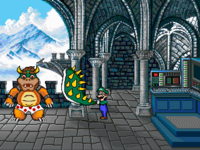
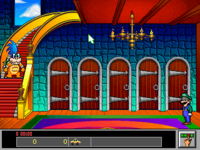
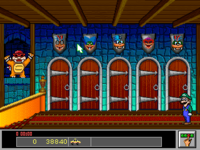
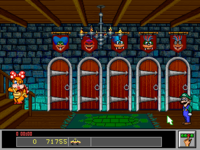
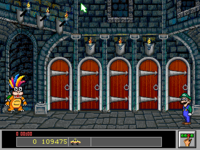
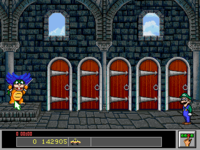
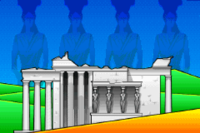
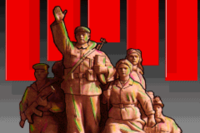
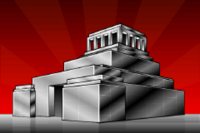
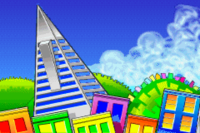
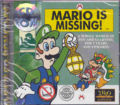

![Mario meeting Luigi (scene by Dan Guerra[109])](https://mario.wiki.gallery/images/thumb/e/ef/Mario_is_Missing%21_Luigi_and_Mario_PC.jpg/120px-Mario_is_Missing%21_Luigi_and_Mario_PC.jpg)